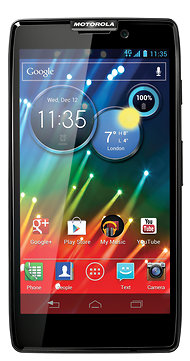She started with free food and new smartphones for every employee, borrowing from the playbook of Google, her employer until last year. Now, though, Yahoo has made a surprise move: abolishing its work-at-home policy and ordering everyone to work in the office.
A memo explaining the policy change, from the company’s human resources department, says face-to-face interaction among employees fosters a more collaborative culture — a hallmark of Google’s approach to its business.
In trying to get back on track, Yahoo is taking on one of the country’s biggest workplace issues: whether the ability to work from home, and other flexible arrangements, leads to greater productivity or inhibits innovation and collaboration. Across the country, companies like Aetna, Booz Allen Hamilton and Zappos.com are confronting these trade-offs as they compete to attract and retain the best employees.
Bank of America, for example, which had a popular program for working remotely, decided late last year to require employees in certain roles to come back to the office.
Employees, especially younger ones, expect to be able to work remotely, analysts say. And over all the trend is toward greater workplace flexibility.
Still, said John Challenger, chief executive of Challenger Gray Christmas, an outplacement and executive coaching firm, “A lot of companies are afraid to let their workers work from home some of the time or all of the time because they’re afraid they’ll lose control.”
Studies show that people who work at home are significantly more productive but less innovative, said John Sullivan, a professor of management at San Francisco State University who runs a human resource advisory firm.
“If you want innovation, then you need interaction,” he said. “If you want productivity, then you want people working from home.”
Reflecting these tensions, Yahoo’s policy change has unleashed a storm of criticism from advocates for workplace flexibility who say it is a retrograde approach, particularly for those who care for young children or aging parents outside of work. Their dismay is heightened by the fact that they hoped Ms. Mayer, who became chief executive at 37 while pregnant with her first child, would make the business world more hospitable for working parents.
“The irony is that she has broken the glass ceiling, but seems unwilling for other women to lead a balanced life in which they care for their families and still concentrate on developing their skills and career,” said Ruth Rosen, a professor emerita of women’s history at the University of California.
But not only women take advantage of workplace flexibility policies. According to the Bureau of Labor Statistics, nearly as many men telecommute.
The bureau says 24 percent of employed Americans report working from home at least some hours each week. And 63 percent of employers said last year that they allowed employees to work remotely, up from 34 percent in 2005, according to a study by the Families and Work Institute, a nonprofit group studying the changing work force.
During the recession, the institute expected employers to demand more face time, but instead found that 12 percent increased workplace flexibility, said Ellen Galinsky, its president and co-founder. She attributed this to companies’ desire to reduce real estate costs, carbon footprints and commuting times.
Technologies developed in Silicon Valley, from video chat to instant messaging, have made it possible for employees across America to work remotely. Yet like Yahoo, many tech companies believe that working in the same physical space drives innovation.
A Yahoo spokeswoman, Sara Gorman, declined to comment, saying only that the company did not publicly discuss internal matters.
Article source: http://www.nytimes.com/2013/02/26/technology/yahoo-orders-home-workers-back-to-the-office.html?partner=rss&emc=rss

